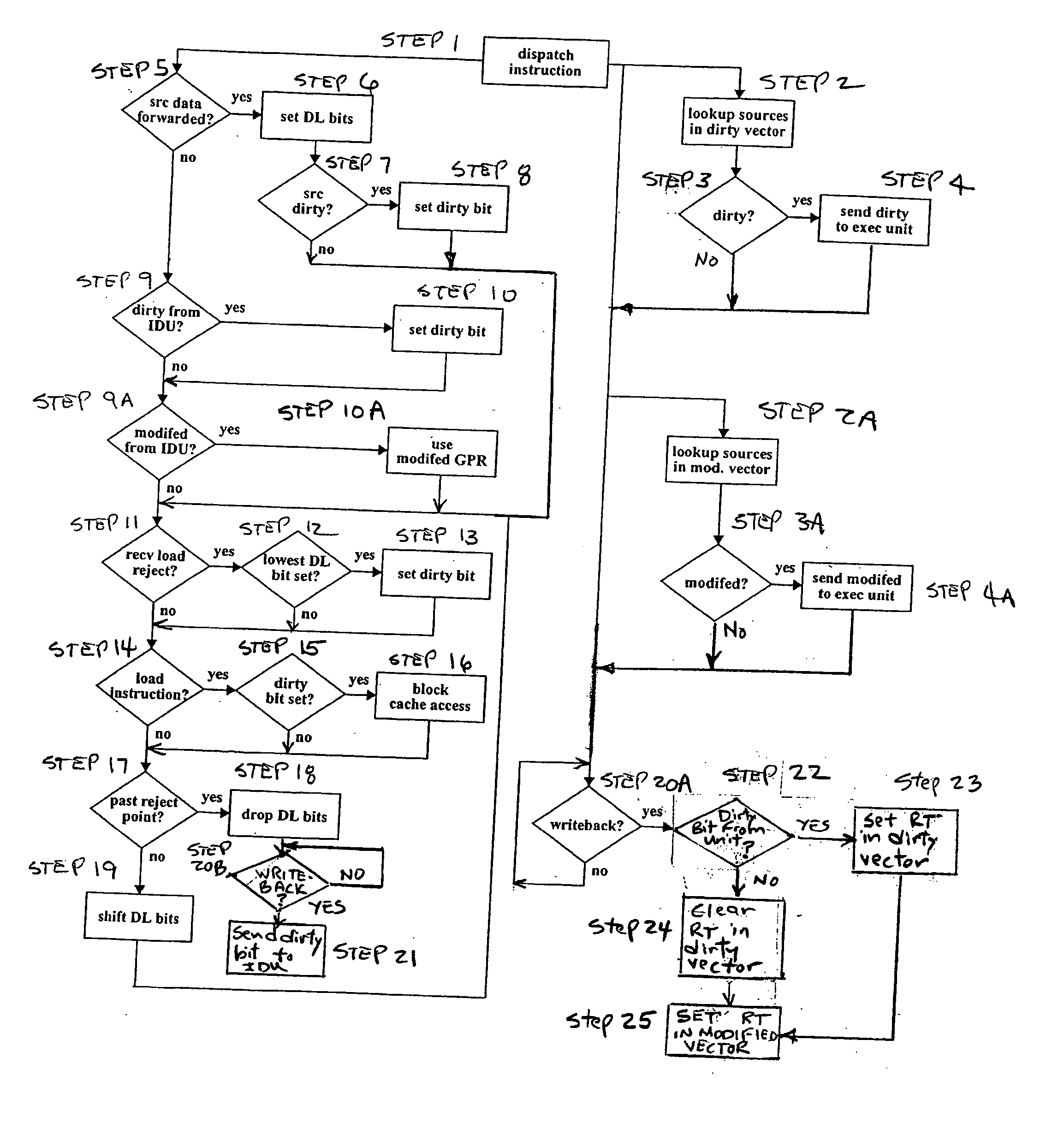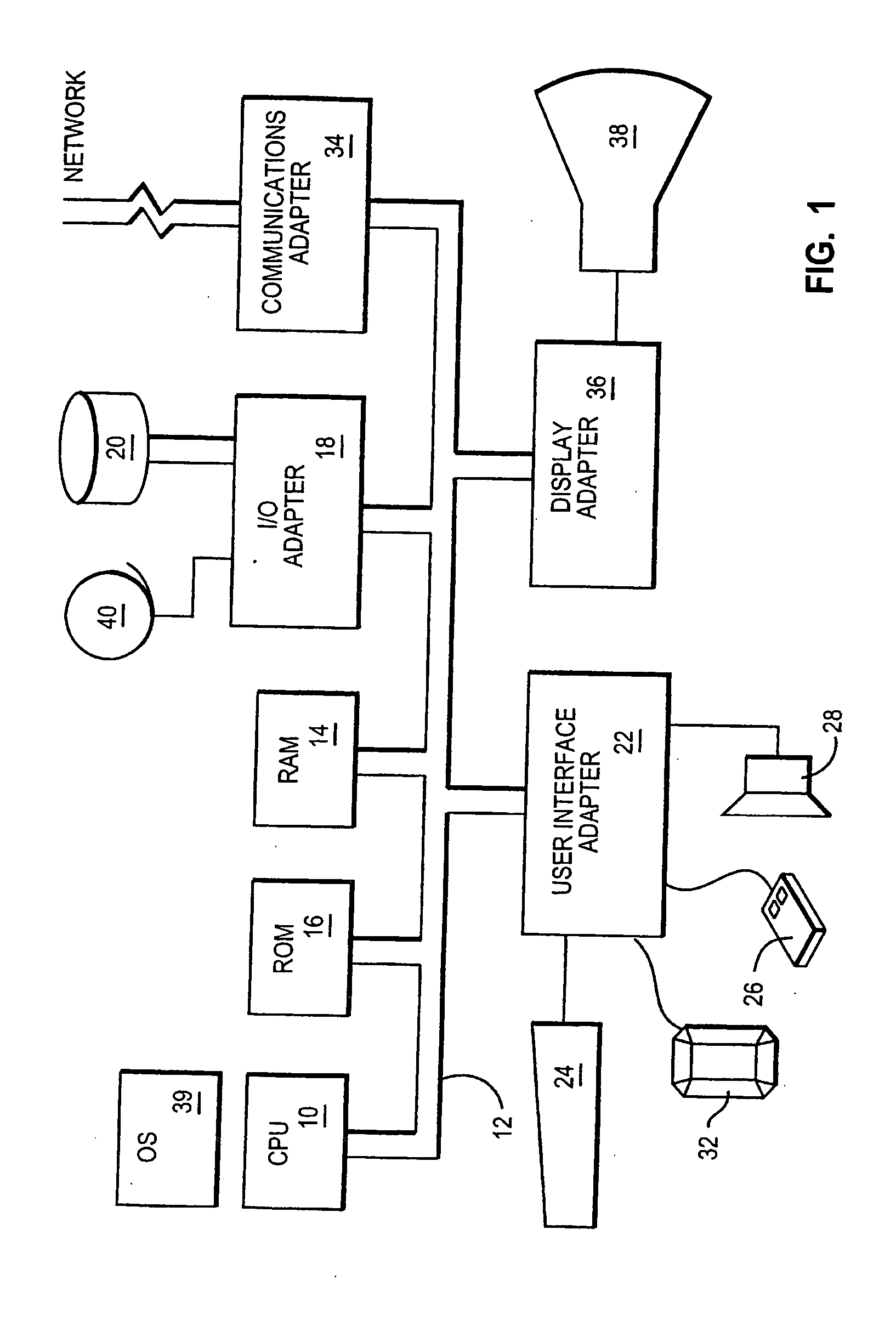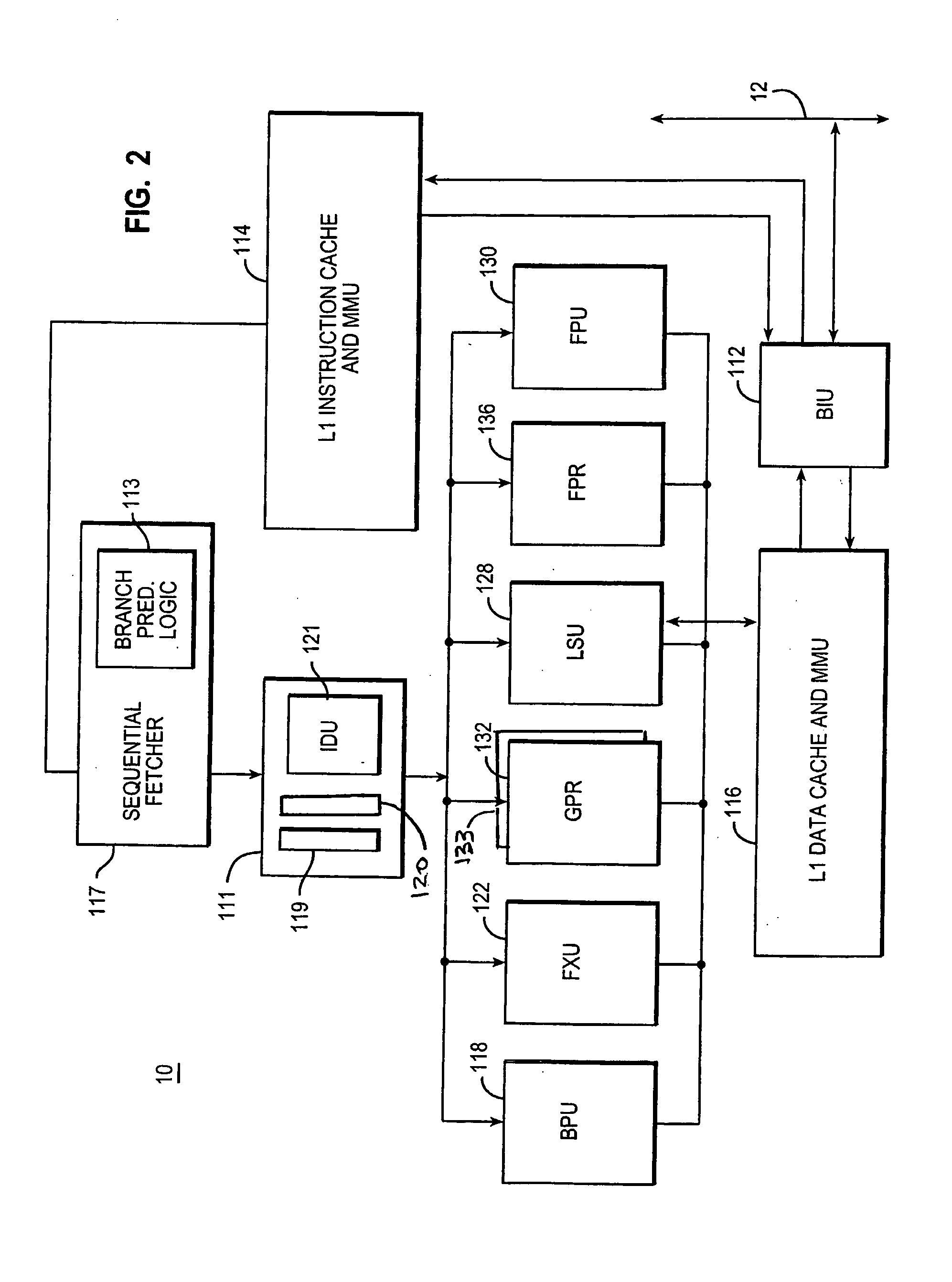Using a modified value GPR to enhance lookahead prefetch
a technology of lookahead and value, applied in the field of instruction processing in the microprocessor, can solve the problems of instruction generation invalid, limited storage facilities for speculative data, and inability to write back to certain architected facilities, so as to reduce the performance impact of pipeline stalls and the frequency of cache misses
- Summary
- Abstract
- Description
- Claims
- Application Information
AI Technical Summary
Benefits of technology
Problems solved by technology
Method used
Image
Examples
Embodiment Construction
[0034] For the purposes of example but not limitation, the subsequent descriptions will refer to the enhancement of the Load Lookahead Prefetch mechanism with a Modified Value GPR, however, it should be apparent to one skilled the art that the same Modified Value GPR enhancement applies directly to the facilities required by the Branch Lookahead Prefetch mechanism.
[0035] The present invention relates to speculative execution of instructions during a stall condition, referred to as a load lookahead prefetch sequence. Under a basic load lookahead sequence, data can become invalid for two reasons: (a) A load instruction could not return valid data (cache miss, TLB miss, etc.); (b) The data was discarded because it reached the end of the execution pipeline and could not be written to architected facilities.
[0036] Co-pending U.S. patent applications “Load Lookahead Prefetch for Microprocessor”, having Ser. No. ______, filed ______, attorney docket number AUS9-2003-0644US1 describes a m...
PUM
 Login to View More
Login to View More Abstract
Description
Claims
Application Information
 Login to View More
Login to View More - R&D
- Intellectual Property
- Life Sciences
- Materials
- Tech Scout
- Unparalleled Data Quality
- Higher Quality Content
- 60% Fewer Hallucinations
Browse by: Latest US Patents, China's latest patents, Technical Efficacy Thesaurus, Application Domain, Technology Topic, Popular Technical Reports.
© 2025 PatSnap. All rights reserved.Legal|Privacy policy|Modern Slavery Act Transparency Statement|Sitemap|About US| Contact US: help@patsnap.com



